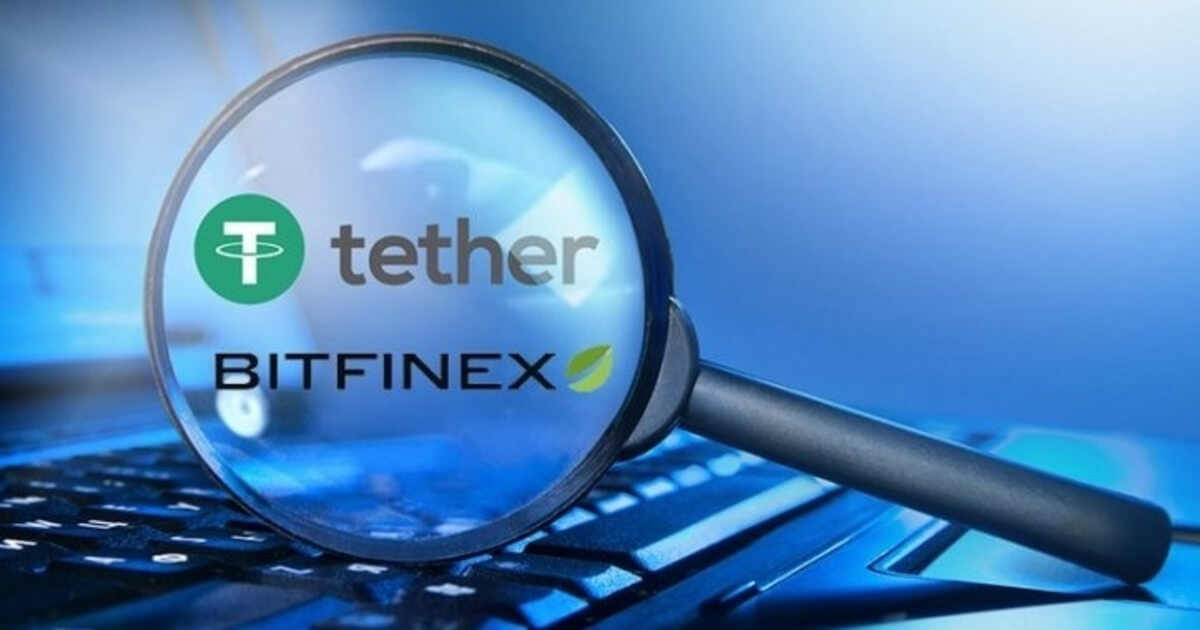The new P2P video and chat app, Keet, offers private and secure communications, with Bitcoin payments on Lightning on its roadmap.
Cryptocurrency exchange Bitfinex and USDT stablecoin issuer Tether have collaborated with the Hypercore open-source protocol team to launch a new peer-to-peer (P2P) communications application, Keet.
Keet allows a given set of parties to exchange instant video, message and file communications in a truly P2P fashion.
The approach improves upon popular end-to-end encrypted but centralized offerings such as Zoom and WhatsApp because the data being shared isn’t forwarded to a central server at any time; rather, the connection is established purely between the users taking part in the chat — lowering latency and increasing reliability.
Keet is launching its alpha version today, and users can download the application on its website. The mobile version of the app is expected to be launched by November 2022.
Holepunch: The Tech Behind Keet
Keet serves as a demo application of what the underlying technology being worked on by the three teams over the past three years, Holepunch, can achieve.
Holepunch, which leverages BitTorrent-like computer networking infrastructure, will be fully launched to the public as an open-source software development kit (SDK) in December 2022. As a nod to “holepunching” — the act of a computer in directly connecting to another — the backboning infrastructure aims to make it easier for developers to develop truly P2P apps with the Hypercore stack.
Hypercore is a peer-to-peer data network built on signed, append-only logs. These logs work similarly to a blockchain, but without the consensus algorithm and thus without the need for a global ledger state to be kept by all nodes.
Holepunch makes Hypercore more accessible by abstracting away low-level technical details of the protocol. It takes Hypercore one step further by simplifying the architecture and enabling more people to build apps with it — which enabled a single frontend developer to build Keet in under four months, chief strategy officer of Holepunch and CTO of Bitfinex and Tether, Paolo Ardoino, told Bitcoin Magazine.
“Holepunch offers a range of easy-to-use, collaborative, P2P data structures allowing developers to mainly focus on building great apps rather than having to be networking or P2P experts,” Ardoino and Holepunch CEO Mathias Buus said in a joint statement sent to Bitcoin Magazine. “Having built Keet on top of Holepunch, we know firsthand how powerful the platform is, and we cannot wait to see what other developers will build.”
All communications on Keet are encrypted by default, as the app leverages asymmetric cryptography. The application generates ED25519 private and public key pairs locally upon first launch.
“Keys are generated on device, all locally, and we're working on adding support for various hardware secure modules (HSMs), like Ledger, to give more flexibility to users,” Ardoino and Buus explained. “This means in the future in addition to keeping their keys on their local device, users can store them on external hardware or their phones.”
Public keys are announced to Holepunch’s distributed hash table (DHT), an open network of computers that can be used by peers to discover and connect to each other.
“Our DHT is used to both discover peers (i.e., mapping a public key to a peer), and to facilitate ‘holepunching,’” Ardoino and Buus said. “In traditional systems, like WebRTC and others, this happens through a centralized server, which leaks a lot of metadata. With Keet this happens using multiple DHT nodes, each only having partial information, meaning much less metadata is lost.”
Holepunch forgoes using a blockchain and a native token entirely, enabling distributed apps to be created for scalability with minimal resources.
“Instead of relying on a shared blockchain between all users of the app, each user constructs many small data structures” which are used for storing the user’s own data as well as that of those in the same call, Ardoino and Buus explained.
“When using blockchains, all of this data has to be stored in one big chain, strictly ordered, and replicated between all users globally, which makes sense for financial systems such as Bitcoin,” they continued. “However, for normal apps, it's often much more efficient to use a bunch of smaller data structures, only storing local data.”
Speaking of Bitcoin, Ardoino told Bitcoin Magazine the team is working on integrating into the SDK the ability to send Lightning payments. Possibilities for bitcoin in Holepunch apps include allowing users to stream BTC to content creators, make regular P2P payments, and offer tips. The SDK will also support Tether’s USDT.
“Bitcoin and Tether payments are add-on features to provide payment rails/options for people using applications built on top of Holepunch or plan to build/offer services through the Holepunch network,” Ardoino and Buus said.
Holepunch will provide primitives to support the digital P2P payment options in a non-custodial form.
“Differently from other projects [like] Impervious AI … Holepunch uses pure P2P communication techniques (DHT, distributed holepunching, swarming) … that are decoupled from the payment system in order to achieve the highest level of freedom in reaching the scalability requirements of a mass communication system,” they added.
Holepunch’s team reimplemented low-level networking protocols to independently select the best technology for highly-scalable data streams.
“This approach resulted in a really flexible solution, expanding from the Merkle log data structures used in Hypercore (that inherently offers data verification and integrity) to a platoon of small libraries and modules that can be hooked together to build mesh networks with high-availability,” the executives said.
Ardoino told Bitcoin Magazine that options currently being considered by the Holepunch team in regards to Lightning integration include integrating services such as Blockstream’s Greenlight, which provide low-cost, on-demand but non-custodial Lightning node management. The team is also exploring enabling full Lightning node integration, Ardoino said.
Payments is one facet of communication, Buus and Ardoino highlighted, which can be offered as an optional service to users embarking on P2P, unstoppable video, audio or text chats.
“Keet is a good example to explain all the above. Keet's goal is to become the most unstoppable communication application, offering a great user experience, with maximum privacy and security,” they said. “This has nothing to do with payments since video/audio/text chats are pure data streams. Payments in the context of Keet are optional and can be used to offer tips, paying for livestreams, sending money to friends and family, etc.”
Keet
In addition to better performance and easier scalability, users also gain lower latency and more privacy in using distributed apps like Keet that don’t leverage inherently inefficient blockchains, the two executives said.
“Users have to replicate very little data to join a call — in fact we do a series of advanced indexing techniques to ensure that only a subset of data in these small data structures needs to be replicated,” they added.
“In Keet, you can see this in action, if you do things like sharing a big file in the chat. When you do that you'll notice it instantly pops up for other users, and only when users download the file, do the missing parts start replicating. Once you have the data you can help reshare it with other users, making it very scalable.”
Bitcoin Magazine tested Keet ahead of launch by joining a call with three people. In a test run, a video file of 3 gigabytes was shared by one of the participants, which the other two users were able to start playing in less than one minute.
Keet’s data sharing mechanism leverages concepts made popular by BitTorrent — users collectively download and seed packets of data to each other in a way that removes the need for the original source to keep feeding information for each new user.
This, a characteristic of Holepunch itself as mentioned previously, could for instance enable P2P, censorship-resistant streaming applications to be built with the SDK — which the streamer would be able to host with simple single board computers like a Raspberry Pi. As users join, they begin feeding each other with the streaming data, relieving the burden on the host to share its data packets to all viewers — a reality of streaming services like Twitch and YouTube that necessarily rely on centralized servers to mediate.
Keet abstracts most of the work away from the user in a simple but functional and intuitive user interface. It requires access to a microphone and camera, and while privacy-conscious people can disable the camera within the call, the app won’t function without access to it being granted first.
The Web3-Contrarian Trend
While the Web3 hype that accelerated over the past couple of years has hit the drum of tokenizing all things and putting everything on a blockchain as the best alternative to decentralize the internet, a countertrend has recently emerged.
The creation and development of P2P infrastructure that, despite the Web3 fuss, doesn’t leverage blockchain technology at all is picking up.
One such example is Web5, a tongue-in-cheek response to Web3 and “crypto” by their perhaps most prominent critic, Jack Dorsey. The Block CEO and co-founder and ex-CEO of Twitter has been vocal about the pitfalls of Web3 — which he claims asymmetrically favors venture capitalists at the expense of retail investors and the public for whom the technology was allegedly intended.
Web5 was announced in June. The initiative, which is being worked on by Block subsidiary TBD, leverages Bitcoin and a plethora of sound computer science technologies to create an ecosystem of decentralized identities, data storage and applications in which the users are in control of their personal information.
Ardoino and Buus argue their solution, Holepunch, is more flexible than Web5.
“Web5, from what we have seen so far, has a more complex and predetermined structure than Holepunch,” the duo told Bitcoin Magazine. “Holepunch provides a set of primitives and the scaffolding to build applications without trying to force specific patterns.”
Another shot at creating a token-free decentralized web was announced in November by Synonym, a company owned by Tether. Despite it being seemingly contradictory for Tether to have two ventures on the same subject, Ardoino and Buus explained the offerings can be complementary.
“Synonym could leverage Holepunch SDK to build part of their services in the roadmap,” they said. “Synonym and Holepunch are not in competition but rather complementary in terms of vision and products they plan to build.”
Which decentralized version of the web will reign as the winner in the future remains to be seen, but surely the one that provides the most value to the end user, not venture capitalists, is more likely to be successful.

You can get bonuses upto $100 FREE BONUS when you:
💰 Install these recommended apps:
💲 SocialGood - 100% Crypto Back on Everyday Shopping
💲 xPortal - The DeFi For The Next Billion
💲 CryptoTab Browser - Lightweight, fast, and ready to mine!
💰 Register on these recommended exchanges:
🟡 Binance🟡 Bitfinex🟡 Bitmart🟡 Bittrex🟡 Bitget
🟡 CoinEx🟡 Crypto.com🟡 Gate.io🟡 Huobi🟡 Kucoin.


















Comments